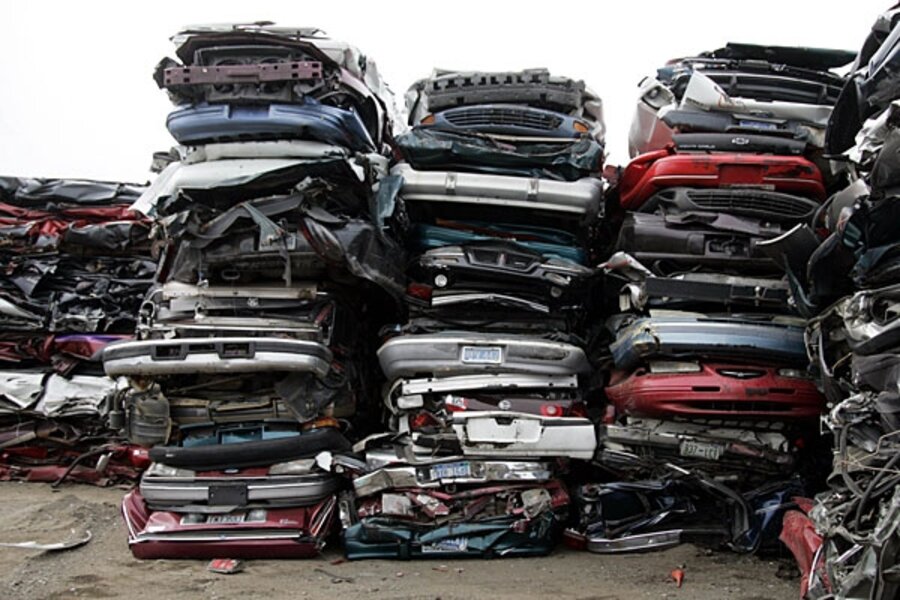'Cash for clunkers': What happens to the old cars
Loading...
What happens to your clunker when you trade it for that shiny new, fuel-efficient car of your choice?
It’s not a pretty end for your dear old Ford Explorer, reportedly the most surrendered car under the "Cash for Clunkers" program (which is officially known as the Car Allowance Rebate System, or CARS).
After your new-car purchase, the dealer is obligated to drain your old car’s oil and replace it with a sodium silicate solution, also known as liquid glass. The silicate is causes the engine’s parts to freeze and ensures it never cruises the highway again. Then the dealer writes the cruel words, “junk vehicle, cars.gov” on the car’s title.
The dealer has seven days after receiving government reimbursement before the car has to be sent to its next stop on the retirement road trip – the certified disposal facility (CDF). Most dealers will shop around, searching for the CDF willing to offer the best price for your clunker, whether it’s a scrap processor, auto recycler, or salvage auction.
Yet clunkers are unknown entities for the CDFs, according to Michael Wilson, executive vice president of the Automotive Recyclers Association. They have to invest $700 to $1,200 to remove a car's fluids, mercury switches, and Freon, and after that, they’re not sure what kind of return they might be able to get. In ordinary times, the drivetrain and engine block account for about 60 percent of the salable parts, but the CARS program renders the engine useless and limits the terms under which the drivetrain can be sold.
At this point, the clunker has two options. If it’s a newer model, it will usually go to a full-service, professional parts dismantler where it will be instantly stripped of the 20 to 40 most commonly reused parts. If it’s an older model, it will sit at a self-service parts recycler, where individuals will pick a needed piece here and there.
But either way, the CARS program mandates that clunkers be crushed or shredded within 180 days, whether all usable parts have been salvaged or not. In contrast, nonclunkers might remain at a professional parts dismantler for 36 months.
-----
Follow us on Twitter.





